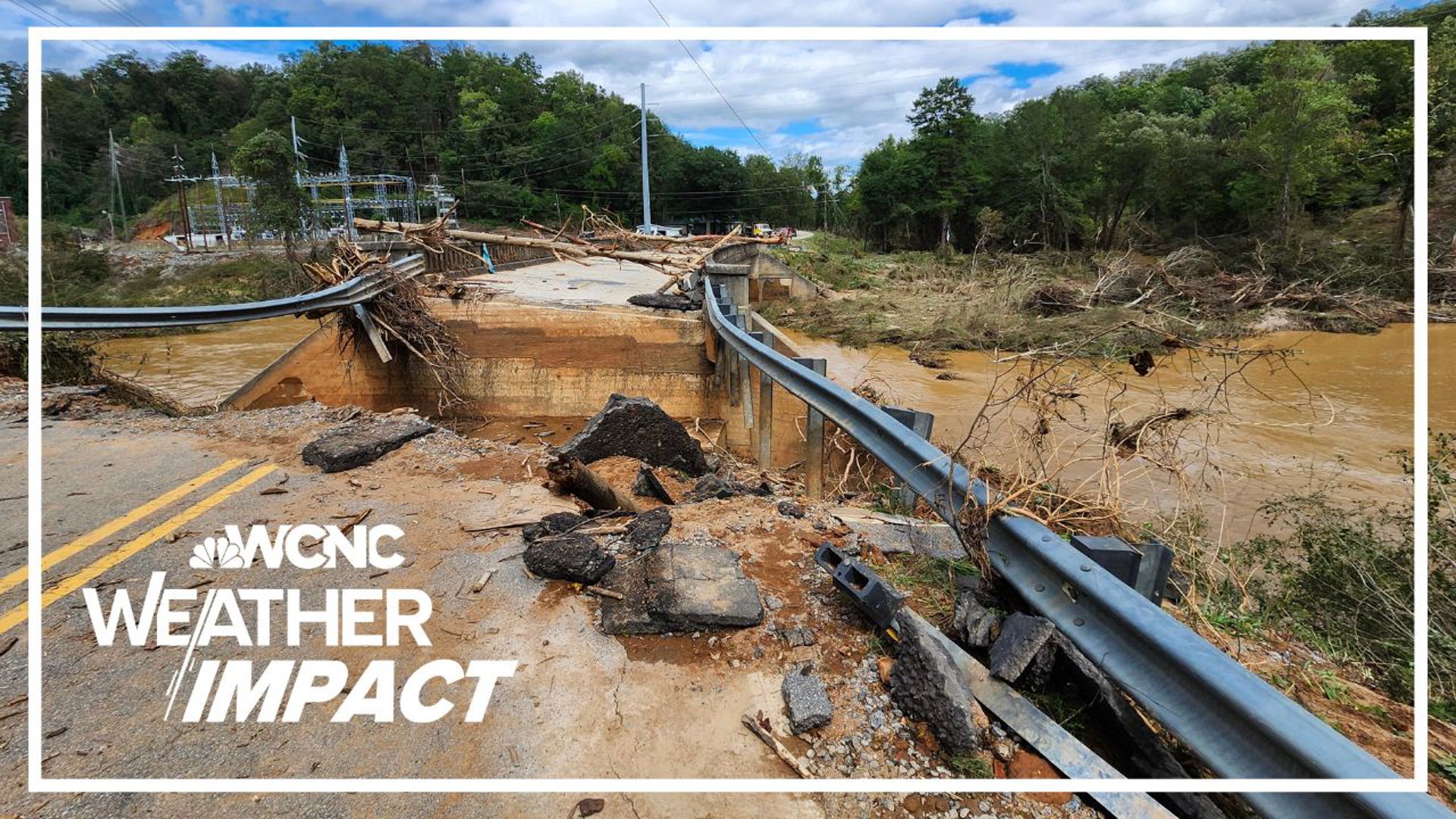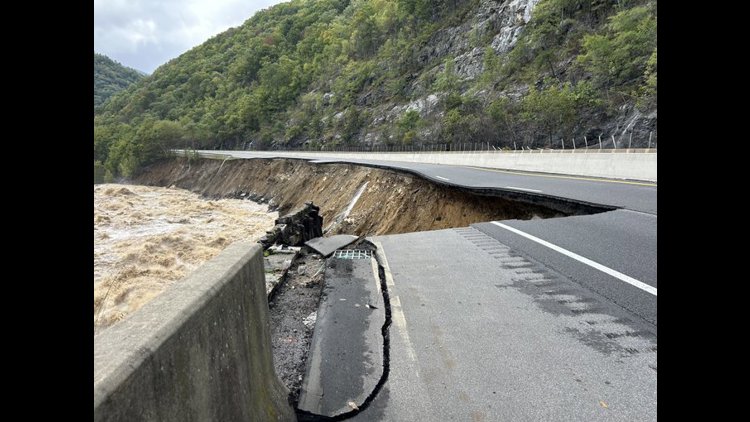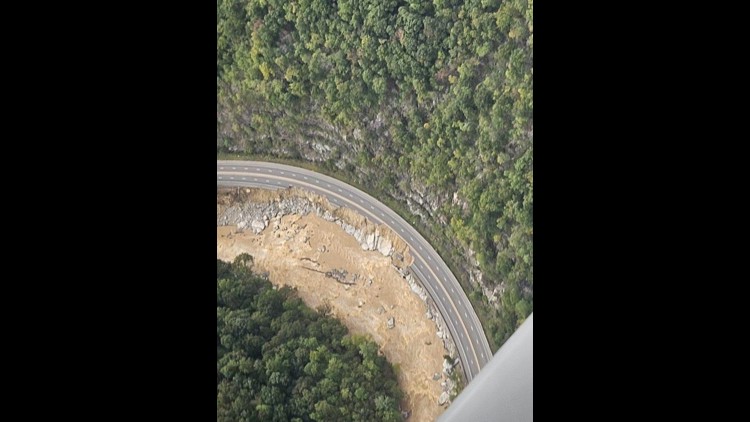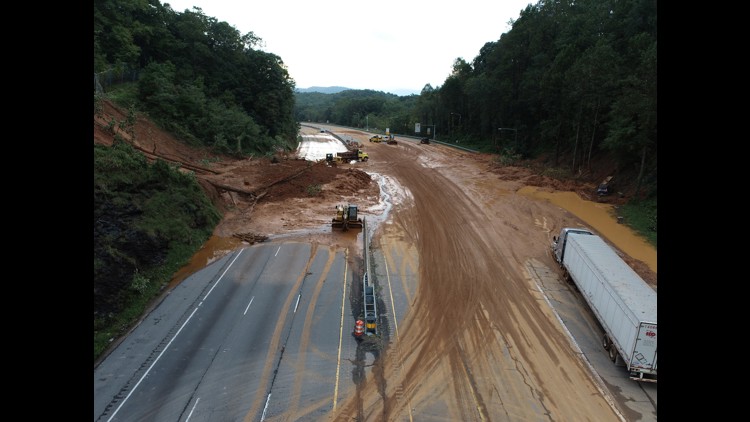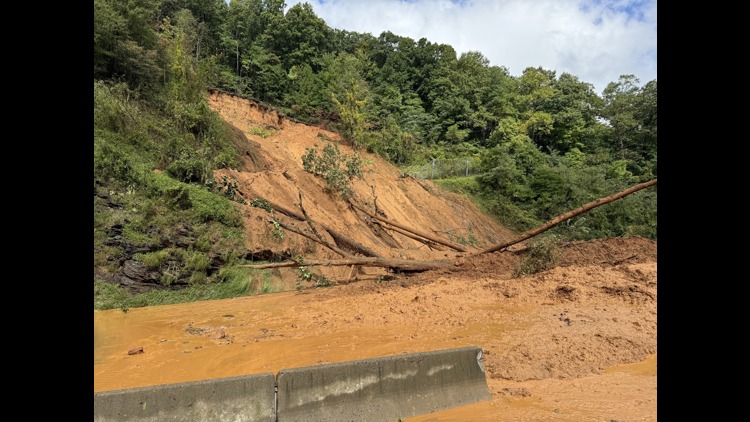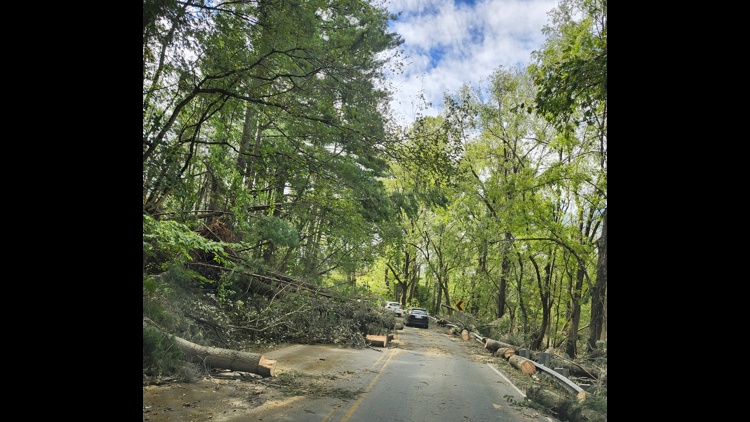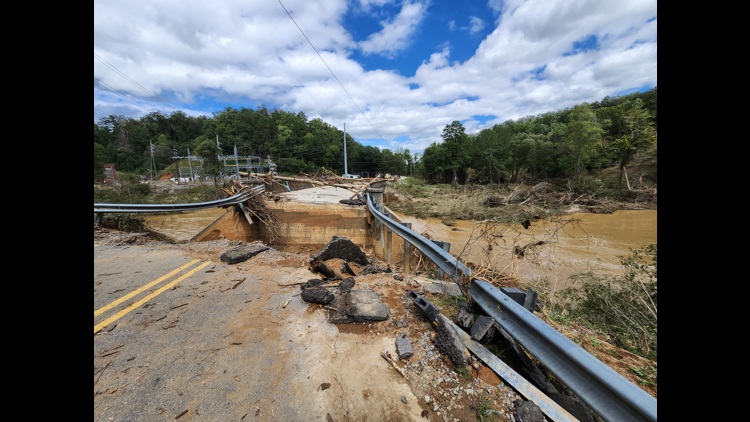CHARLOTTE, N.C. — One of the biggest hurdles for critical resources in western North Carolina after Hurricane Helene's destruction is the sheer amount of impassable or blocked roads due to storm damage and debris.
Since Friday, NCDOT has said drivers should consider all roads in western North Carolina closed. That includes westbound Interstate 40, which is closed for over 50 miles from Statesville to Black Mountain due to the storm's impacts. Eastbound I-40 reopened Tuesday morning.
NCDOT crews are still assessing the damage, according to communications director Jen Goodwin. That includes I-40, Interstate 26, state highways and everything in between, so it could take months before any sort of route through the western half of the state opens.
The monumental task is made even more difficult by the swath of obstacles they're encountering.
"Mudslides, bridges being washed out or compromised in some way by floodwaters or debris flows, parts of roadways that have collapsed," Goodwin said.
NCDOT continues to discourage travel to western NC because of the dangerous condition of the roads.
She adds that there are more than 180 reported road closures right now in western North Carolina and anyone attempting to go west won't make it very far before encountering a blockade.
"Say you’re heading west from the Triangle area and you come toward Statesville. You will get an emergency alert on your phone saying don't go any further," Goodwin said. "I mean, that's how serious it is."
There are more closures that haven’t been counted, but Goodwin says travel is difficult even for DOT crews and communication is spotty. Right now, the state is assessing the extent of the damage with help from several East Coast states that weren't impacted by Helene.
The process is safer for crews if there's no traffic on the road. The only exception is emergency convoys bringing in critical supplies.
"You could put yourself in a dangerous situation and then an emergency responder is put into that situation as well trying to come to your aid when they’re trying to do other things regarding the response and cleanup efforts," Goodwin said. "I know it’s difficult, but we’re just asking folks just to stay put."
Once crews assess the damage, starting with the interstates and main highways, then they will determine how to make repairs, come up with a timeline for when the roads will open and figure out where to create detours in the meantime to get traffic moving again.
You can check current road closures in the area on DriveNC.gov.
Contact Destiny Richards at drichards5@wcnc.com and follow her on Facebook, X and Instagram.

